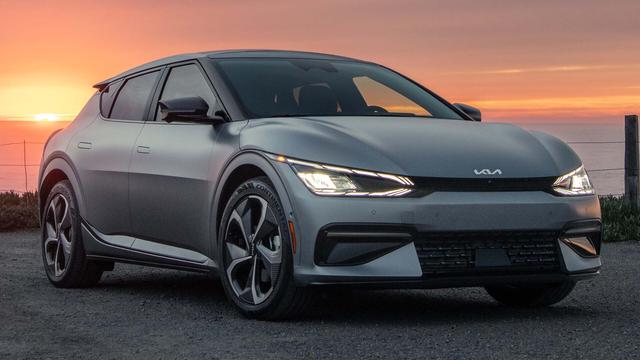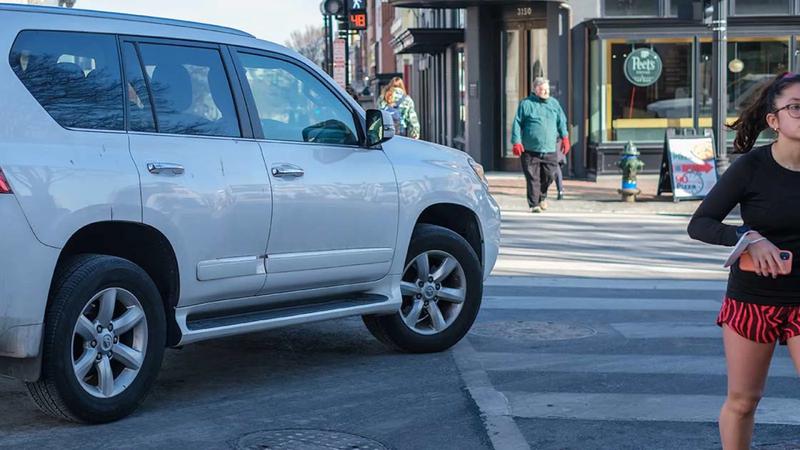Like many companies in recent months, Kia released a product and planning roadmap, laying out how the company will transition to a mix that included more battery-electric vehicles (BEVs) and greater overall growth, among other things. Kia's big year should be 2030, if all goes according to plan, when many of its ideas will go into full implementation—including the introduction of two new electric Kia pickup trucks.
Kia outlined four key areas in an updated version of its previous operating "Plan S" strategy, and there's a lot to look forward to.
By 2030, Kia hopes to sell 4 million vehicles globally—a nearly 30-percent jump from its 2022 targets. That's all well and good, but more specifically, Kia wants a little more than 25 percent of those vehicles to be BEVs in less than a decade. And of all vehicles sold in 2030, it says 50 percent will be electrified in some form or another—including BEV, hybrid, or plug-in hybrid (PHEV).
Unlike sister company Hyundai, Kia hasn't talked about hydrogen—not yet, at least. Hyundai made a big deal out of its hydrogen plans last year, highlighting its investments in hydrogen fuel cell vehicle (FCEV) technology. Whether these corporate cousins will share this technology, or if it will remain a Hyundai thing while Kia leans more into electrification, remains to be seen. Competitors Toyota and Honda, as well as other global automakers also continue to develop hydrogen technology as well.
Kia is planning an aggressive rollout strategy for these upcoming 14 EVs, launching two per year starting next year, in 2023. We've already seen the tip of the spear, so to speak—the 2022 Kia EV6, a culmination of roughly a decade-long EV experiment with vehicles like the Niro and Soul EVs is now hitting the streets. The EV6 must have gotten some executives jazzed up, as the previous plans for 11 EVs by 2026 have now been broadened into a 14-BEV spread by 2030.

The EV9 SUV is up next, launching in 2023, and at roughly 16 feet long, it'll cast a shadow even on the already surprisingly large EV6. Kia says this will be the flagship of its EV lineup, and should provide competitive performance. Kia promises a 0-62 mph sprint in 5 seconds flat, and around 336 miles (presumably on the European test cycle; expect less when the EPA tests it).
And for those who appreciate the torquey performance potential of a powerful EV, Kia's brief statement that all BEVs would get a GT variant—in the same vein as the EV6 GT—should be artificial EV noises to your ears.
What accounts for the three additional vehicles in the company's expanded BEV plans? One is a mystery entry-level model, of which no other details are provided. But there will be two other EVs worth taking note of: a "dedicated" EV pickup truck, and a "strategic model for emerging markets." Both descriptions are intentionally cryptic, but it seems like a safe bet that the "dedicated" pickup wouldn't be based on the platform of the internal-combustion Hyundai Santa Cruz. This is an area Kia has been contemplating for years—consider the Kia KCV-4 Mojave from 2004.
Of course, the Mojave never came to fruition, but it was shown at the Chicago Auto Show at the time. With the EV revolution allowing companies a semi-blank slate to work from, perhaps Kia's decided it's time to just jump into the pickup truck game. No word yet on the size, or intended market, for the "dedicated" truck. It looks like we'll miss out on the other upcoming model intended for emerging markets.
Kia already has a manufacturing facility in (the U.S. State of) Georgia, and it seems like the company is interested in expanding local production of its upcoming market-specific EVs. For the crossover- and pickup-hungry U.S. market, that means midsized SUVs and pickups will be built here.
Kia isn't crowing about breaking ground on a new dedicated EV facility in this release, so perhaps they'll retool the Kia Motors Manufacturing Georgia facility (which currently builds the Telluride, Sorento, and K5 models) to produce their EV successors. We're not sure how much room that'll leave models like the K5, if push does come to shove.
Meanwhile, Kia will build smaller and midsize EVs in Europe, mid-size market-specific vehicles in China, and entry-level EVs in India, according to the plan.
Kia also announced that its advanced driver-assistance system, "AutoMode," will arrive with the EV9 in 2023. The feature will include Highway Driving Pilot and allow for future OTA updates. Like a new Covid variant, it'll rapidly spread throughout Kia's BEV environment.




